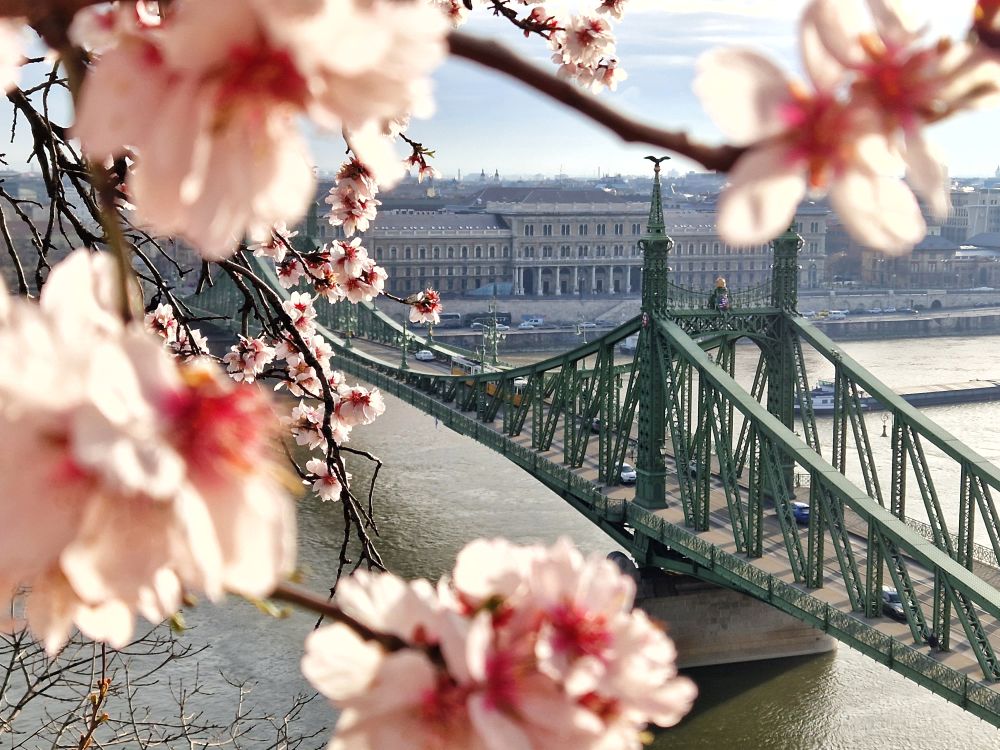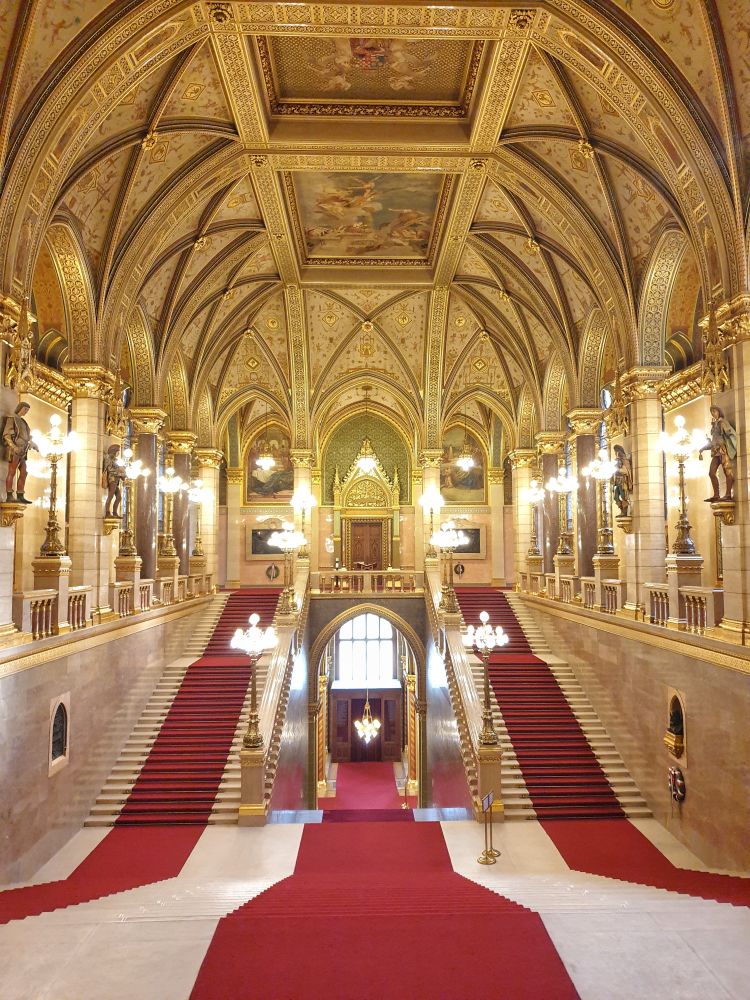My hometown, my beloved Budapest, caters to visitors of all interests – whether you love architecture, the thermal baths, the trendy ruins bars, the gastronomy or the culture, you come to the right place! Budapest has a wonderful mix of old and new: a rich history, fascinating museums, spacious parks, a vibrant foodie scene and, most of all, a jaw-dropping view of the Danube from a few easy-to-reach viewpoints.
Best time to visit Budapest
Budapest has four very distinct seasons. Summers are hot and this is when the city has the most visitors. Winters can be cold and wet. The best time to visit is the spring and fall, i.e. April-May and September-October. If you do not mind the freezing temperature, end-November and December can be nice, too, with a lot of holiday decoration and Christmas markets. I do not completely rule out summer, either, when Budapest is a vibrant city with lots of outdoor events, festivals and restaurants serving food and drink outside.
How to get to the center from the airport in Budapest?
Budapest Ferenc Liszt International Airport (BUD) is located about 16 km (9.9 miles) southeast of the city center. From the aiport, hop on the 100E Airport Express bus, which makes multiple drops in the city centre, finishing at Deak Ferenc square. The journey takes about 35 minutes and costs 2,200 HUF (€6) each way. Buses operate around the clock, every 7-12 minutes during the day, every 15-20 minutes in the evening, and every 30-40 minutes late in the night and early morning.
If you are travelling with luggage or looking for a more comfortable and direct transfer, there are also airport shuttle services available at Budapest Airport. These services offer door-to-door transfers.
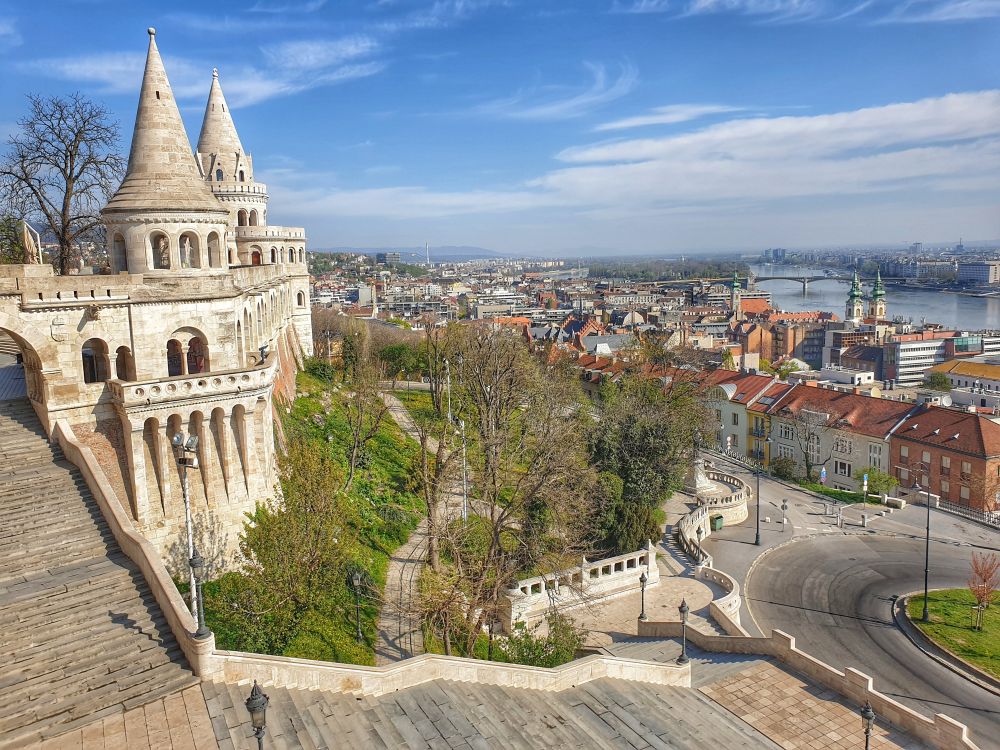
Public transport in Budapest
Walking is one of the best ways to explore Budapest, particularly the city center and historical districts, where many of the key attractions are located. We have no über and I suggest you avoid taxis (they are expensive and often overcharge tourists). Do not even think of renting a car – parking places are limited, fees are high and on the streets you can only pay with coins. Use public transportation!
Budapest has a well-developed and diverse public transportation system, which includes buses, trams, trolleybuses, four subway lines, and boats along the Danube River. Make sure to ride the yellow line, which is the oldest metro in continental Europe.
Tickets are valid on the bus, metro, trams, and trolleybuses, and can be purchased at any metro station with a single ride costing 450 HUF. You can also buy tickets at ticket vending machines at various bus or tram stops. One standard ticket is good for one trip, i.e. if you need to transfer, you need a new ticket. You need to validate tickets before riding by punching them in red machines before getting on the subway. You must also validate the ticket on the bus or tram as soon as you get on. Inspectors often check the tickets and if you are caught using public transport without one, you are liable for a hefty fine.
EU citizens over 65 years (including Norway and Switzerland) can use local public transport free of charge. This regulation applies to practically all public transport networks, to scheduled bus routes and trains throughout Hungary, including the 100E airport shuttle bus. All you have to do is present an identity card or passport with a photo and date of birth.
If you plan to use public transportation frequently and visit several of the included attractions, you should consider purchasing a Budapest Card. It offers several benefits, including unlimited travel on public transportation. Many museums and attractions also offer free entry or significant discounts with the Budapest Card. Additionally, you get discounts at certain cafes, restaurants, and shops. You will also get free entry to Lukács Thermal Bath. Buy the Budapest Card HERE.
A totally unique experience in Budapest is the Budapest Floating Bus Tour – you will ride a bus, which can float on the river! Book this fun activity HERE.
Stay connected – buying a SIM card or e-SIM in Hungary
There are three cell networks in Hungary: Magyar Telekom, Yettel, and Vodafone and they all have excellent coverage. You can buy SIM cards at the airport. A cheaper but more time consuming option is to visit a shop of any of these three companies. They all have, for example, shops in the Westend Shopping Mall.
An easy and fast option is to use an e-SIM card. You can purchase it for example in the Airalo app and it takes just a couple minutes. You can set it up at home and once you land, it connects automatically. Travel e-SIMs are data-only, i.e. you don’t get a local number. You can use them for navigation, internet, translation, social media, etc – while you use your own phsyical SIM for making calls (but you can use the e-SIM for whatsapp). If you don’t already have Airalo application, sign up here and you get 3 USD credit!
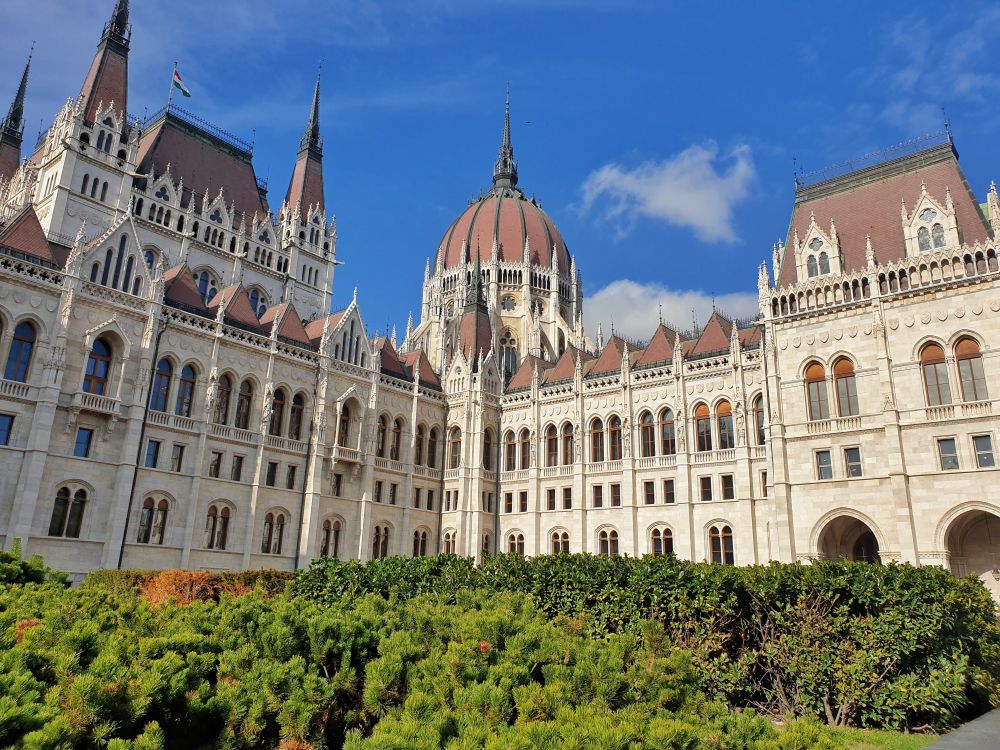
Best Budapest weekend itinerary to visit the “must see” sights
Budapest has so many attractions that it can be overwhelming to decide how to tackle the most important sights. Don’t worry! To help you plan your visit, I’ve created this Budapest itinerary with the best things to see and do in the city. If you want to take it easy, don’t do everything, just pick and choose the things you prefer to see!
Budapest is divided into two parts by the Danube: Buda and Pest. They used to be 2 different cities and were united only in 1873. Buda is now the classier and more residential side of the city, with lavish homes on its hillsides as well as a castle area with top museums. Pest is home to many offices, banks, but also major sights, the foodie scene, and this is the place to hang out and have fun. Its downtown area, district 5, is the best place to stay as it is the center, from where you can easily reach all the action.
We start the exploration each day at the heart of district 5, Deák square, where 3 subway lines meet.
Budapest weekend itinerary – Day 1
Let’s start with the Buda (west) side of the Danube, in the castle hill. Not only is this the most charming area of the city, but this is where you have the best panoramic views of Pest and the Danue.
The cheapest and easiest way to get up the hill is taking the No. 16 bus from Deák Ferenc square. Many tourists also like the funicular from the bottom of the hill (Clark Adam square), but the queues are often long, and it is more expensive. You can also walk from the Buda side of the Chain Bridge, Clark Adam square. It only takes 15 minutes via Hunyadi János street to reach Matthias’s church.
Buda castle is not really a castle, rather a complex of museums and residential homes in old cobblestone streets. The amazing combination of stunning architecture, beautiful art, and the centuries of history enclosed within its walls is what makes the Buda Castle complex so great to visit. Things to see in the castle area:
Matthias Church
Budapest’s neoclassical cathedral is one of the most sacred Catholic churches in all of Hungary. Many of Hungary’s kings were crowned here, and the church is home to important tombs and ecclesiastical treasures. The church takes its name from King Matthias, who ruled from 1458-90, well-known as a patron of the arts and revered for reconstructing the Hungarian state after years upon years of feudal anarchy. Don’t forget to admire the roof, which is decorated with colorful Majolica tiles.
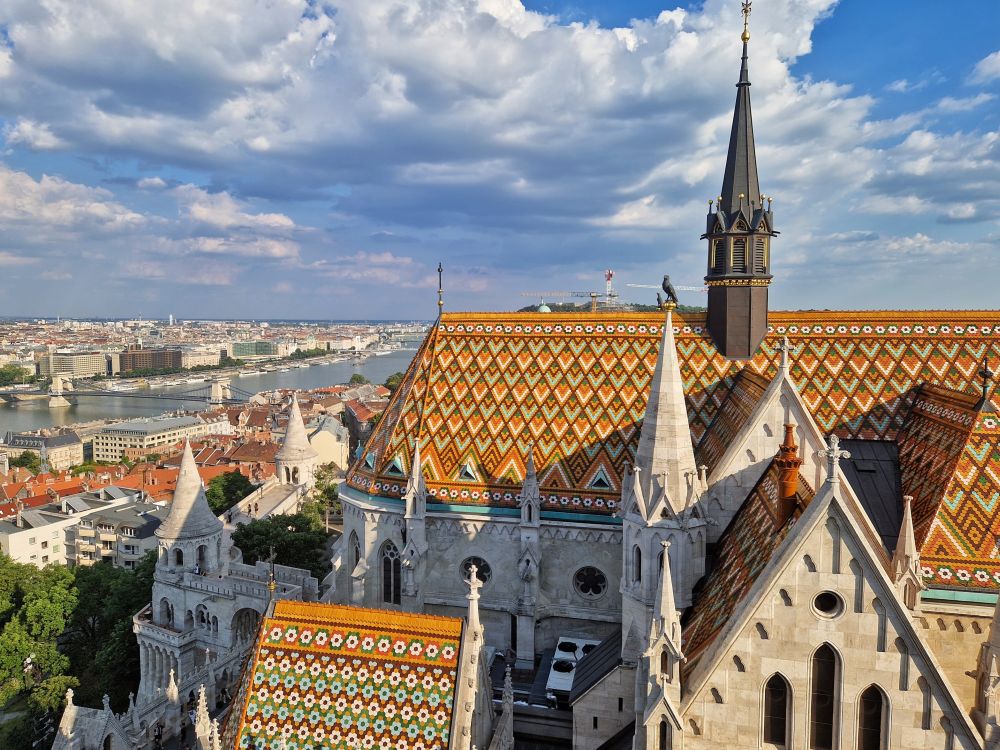
Opening time, ticket prices and purchase on the church’s website.
Fisherman’s Bastion
The Fisherman’s Bastion is one of our most famous monuments because of the unparalleled panorama of Budapest from its neo-Romanesque observation decks. The main façade of the Fisherman’s Bastion, parallel to the Danube, is about 140 metres long, so you can enjoy the view while taking a short walk. Its spire-like stone towers symbolise the seven Hungarian squatters. The name dates back to the Middle Ages, when this part of the castle wall was protected by a guild of fishermen. It has been part of the Budapest World Heritage Sites since 1987, as part of the Buda Castle District. The Fishermen’s Bastion is open all day in autumn and winter, but in spring and summer you have to buy a ticket for certain times of the day. Tip. It can get incredibly busy throughout the day due to its popularity. Try to get there early morning before the tour groups arrive to see it without the crowds.
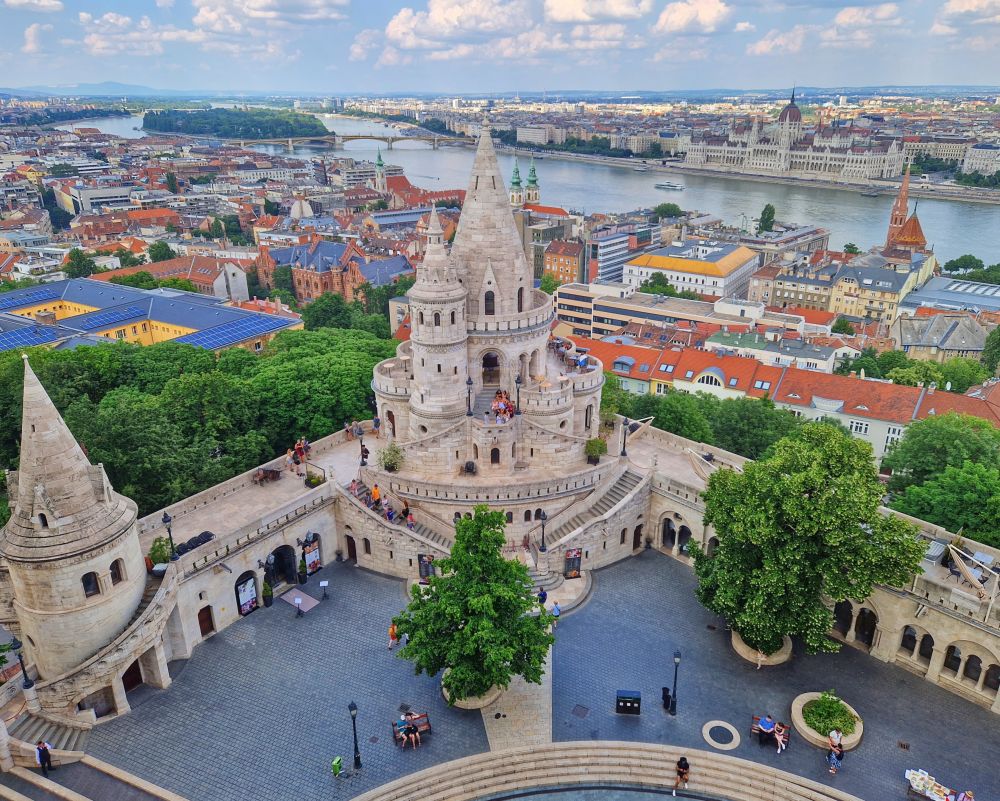
Palace complex
The Buda Castle area is also home to the historical palace complex of the Hungarian Kings in Budapest. It was first completed in 1265. Along the years, several monarchs extended and decorated the buildings. During the Turkish occupation (15th-16th century) the palace suffered major damages. The renovations started in 1715, but the main restoration and re-building was completed in the early 1900’s. Today it is home to a number of cultural institutes, including two museums: the Hungarian National Gallery (largest public collection of fine art in Hungary) and the Budapest History Museum.
Rock hospital and nuclear bunker
The Rock Hospital and Bunker Museum is located at the bottom of Várhegy. Nearly 200 life-like wax figures and original hospital equipment help you experience the events and atmosphere of World War II, 1956 and the Cold War. In the latest exhibition section, the current state of war medicine is illustrated through the lifesaving actions of special operations forces. The Rock Hospital Bunker Museum is open all year round, but can only be visited on a guided tour.
Caving
You can also explore the labyrinth cave system under the Buda Castle District as you learn about the history and unique geology of the caverns.
Book this activity HERE
Budapest weekend itinerary – Day 2
Lets start the second day just a short stroll from Deak square, at the Pest side of the Chain Bridge.
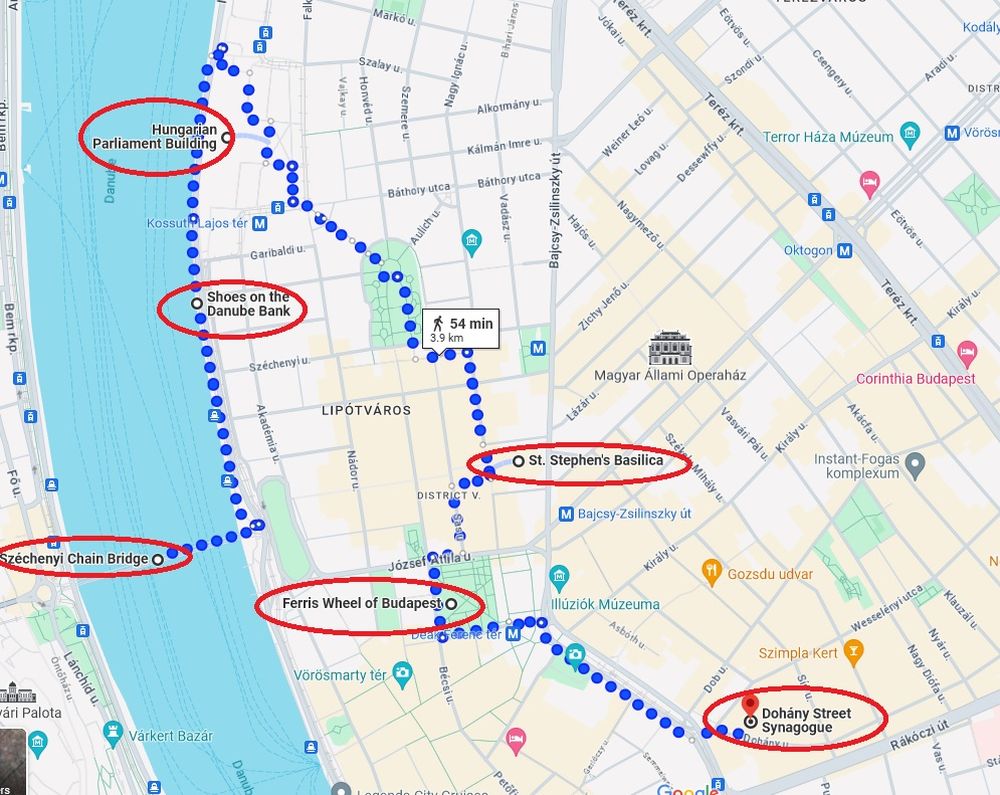
Chain Bridge
It was the Chain Bridge, inaugurated in 1849, that first connected the two cities. Széchenyi Chain Bridge is the official name of the bridge, named after the man who conceived the idea and brought it to life. István Széchenyi was a politician and a writer, and is remembered today as “the Greatest Hungarian”. Before the construction of the Chain Bridge, crossing was only possible by a wooden bridge held up by 42 small boats that had to be dismantled every winter.
The Chain Bridge with its iconic lion statues is one of Budapest’s most famous landmarks. There is a widespread legend in Budapest relationg to the lions. The sculptures were placed three years after the bridge’s inauguration for everyone to admire until the apprentice of a shoemaker one day cried out that the lions had no tongues. The rumour quickly spread across the city and the sculptor was ridiculed for having forgotten to make tongues for the lions. The sculptor felt so deeply ashamed that he committed suicide.
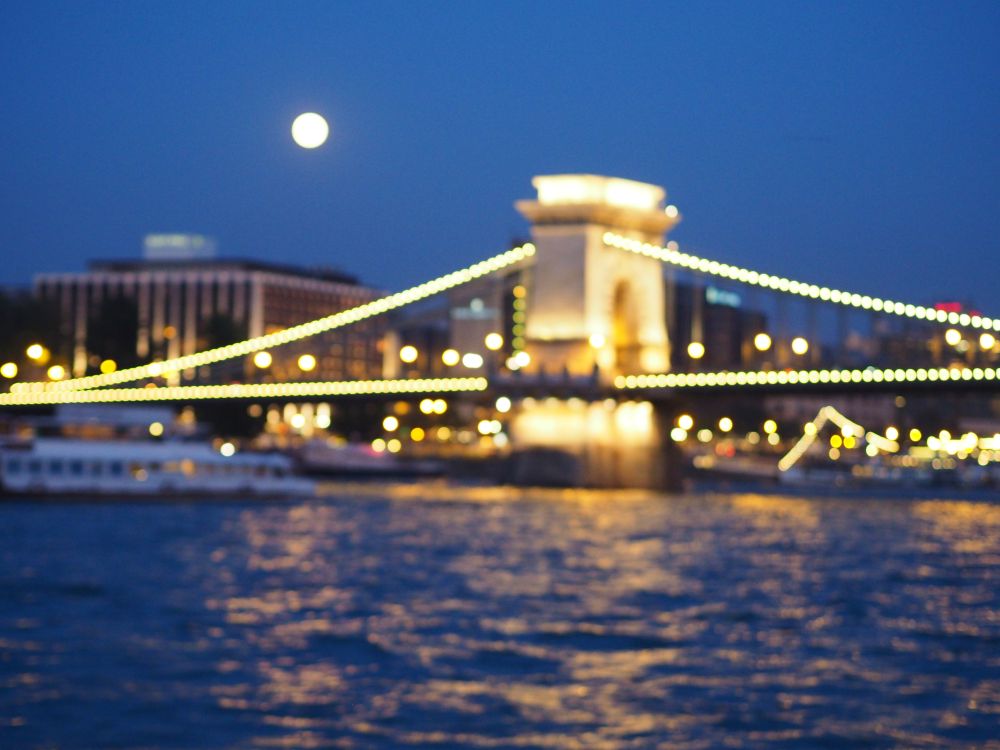
Shoes on the Danube bank
If you leave the Chain Bridge and walk north along the edge of the Danube River toward the Parliament, you’ll soon notice dozens of bronze shoes on the ground, facing the water. These represent a memorial to Jewish people who were murdered along the banks of the Danube in Budapest in 1944 and 1945. They were ordered to take off their shoes (shoes were valuable and could be resold by the militia after the massacre), and were shot at the edge of the water so that their bodies fell into the river and were carried away. It’s a very moving tribute and a must-see spot when visiting Budapest.
Parliament building
Nestled right up against the Danube, Hungary’s gorgious Parliament building is known as one of the most beautiful in the world. Today it is the fourth largest parliament in the world, built to commemorate the 1000th anniversary of the founding of the Hungarian state, based on the designs of architect Imre Steindl. No expense was spared during the construction work, so about 40 kg of 23 carat gold was used. Opened in 1902, it was the tallest building in Hungary until 2022, when a large office building (MOL Campus) was built. Inside, you’ll view the Hungarian crown jewels and explore the maze of chambers and staircases while learning about the building’s history. If you’d like to take a tour inside the building, you’ll need to book a tour at least a few days in advance.
Book your tickets on the OFFICIAL SITE and even if you have timed tickets, make sure you arrive a bit earlier, as queues are often long.
St. Stephen’s Basilica
Exactly the same height as the Parliament building, 96 meter tall, St. Stephen’s Basilica is remarkably beautiful and ornate. Greek cross layout adorned with mosaics, paintings, sculptures, and stained glass, accomodating up to 8000 people during ceremonies. Named after Hungary’s founding monarch, King Stephen, the Basilica also cradles a relic: the Holy Right Hand, preserved in the Treasury. Be sure you also climb the tower for its gorgeous views! There’s a lift if you don’t fancy the steep flight of 364 stairs.
The Basilica is not only a religious site, but doubles as a cultural hub, hosting concerts and events as well as wedding. You can book a concert HERE.
The square in front of the Basilica, adorned with geometrically patterned cobblestones, is often used for events. In winter it transforms into an Advent wonderlands.
Budapest Eye
I hope you have not had enough incredible views of Budapest yet, because just a short stroll away from St. Stephen’s Basilica sits the Budapest Eye. The largest Ferris Wheel of the country takes you to 65 meter high to enjoy the view.
Synagogue
The large Synagogue in Dohány Street is not only the largest in Europe, but must be the most beautiful one as well. It was built in the 1800s borrowing Moorish styles from North Africa and Spain. While you explore this architectural masterpiece, you can also learn about Jewish history. The Synagogue is a temple of the neo-Jewish faith, built in the former Jewish quarter of Budapest, where many Jewish people still live today.
The Synagogue is still primarily a place of worship, but also hosts cultural events and concerts. It is open on weekdays and closed on Saturdays and Jewish holidays.
Budapest weekend itinerary – Day 3
Let’s start again at Deak Square! Start strolling down on Andrassy Avenue (or if you are tired, you can take the yellow line subway).
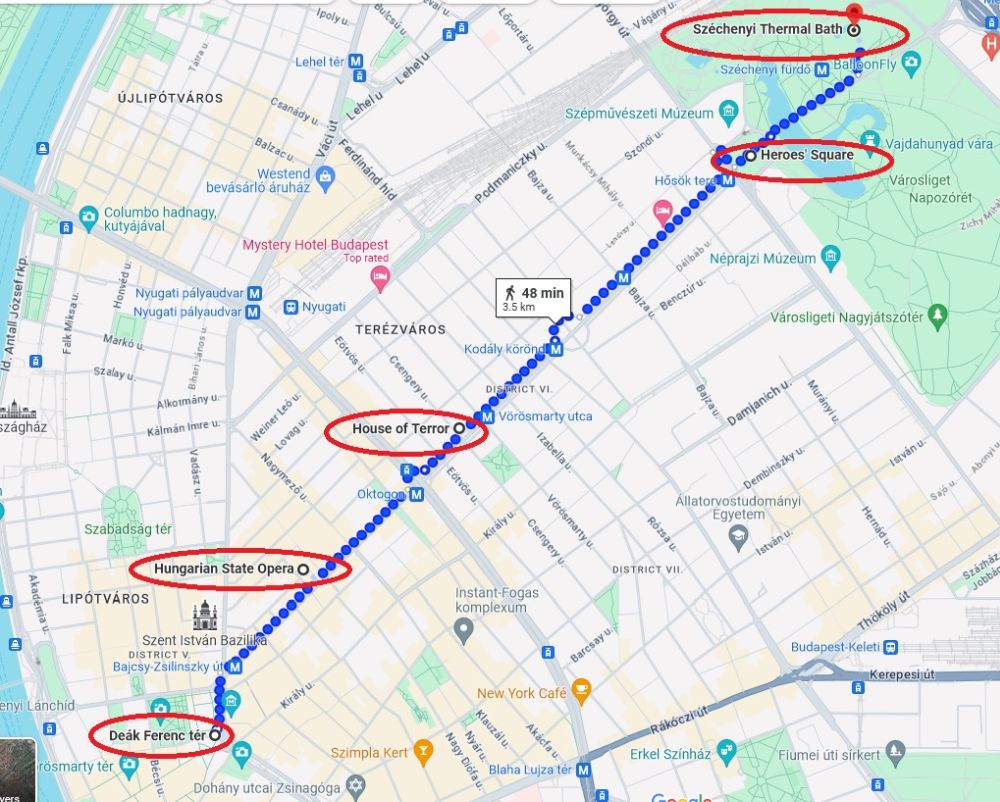
Hungarian State Opera House
The Hungarian State Opera House is one of the grandest attractions in the city, which is built in a neo-Renaissance style with several Baroque details. The two statues in front of the building represent Franz Liszt and Ferenc Erkel (composer of the Hungarian national anthem). There are daily guided tours available in several languages to admire the gorgeous interiors.
The rich decoration emphasises the building’s representative function: the marble foyer and staircase, the marble-tiled walls, the inlaid floors of the salons, the silk wallpaper, the golden-red glow of the auditorium, the artistic murals and frescoes decorating the ceilings and side walls. The horseshoe-shaped, three-storey auditorium creates a breathtaking experience. The dazzling red-gold colour scheme, the serene ceiling frescoes and the magnificent bronze chandelier are the most perfect combination of the building.
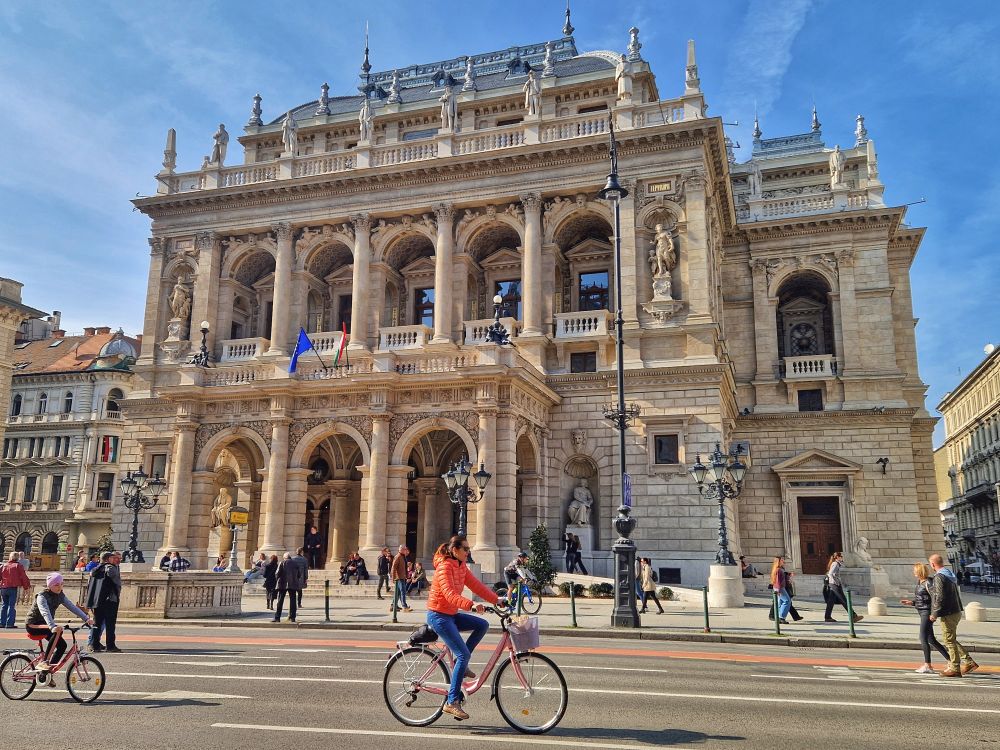
House of Terror
The House of Terror Museum is located at 60 Andrássy Avenue, on the site of the former headquarters of the communist secret police. Its exhibitions commemorate the victims of the communist and fascist regimes in Hungary, including those who were detained, interrogated, tortured and killed in the building. The permanent exhibition depicts the country’s relationship with Nazi Germany and the Soviet Union during the years of occupation and oppression. The harrowing exhibition helps us to get to know and understand the bloody periods of Hungarian history.
Heroes’ Square
At the end of Andrassy Avenue is the largest square in Hungary: the Heroes’ Square. The square was built for the Millennium celebrations in 1896 and commemorates the millennial history of the Hungarians. 14 statues of emblematic historical figures stand here, with an obelisk in the centre and a statue of the Archangel Gabriel, which won the Grand Prix at the 1900 Paris World Exhibition, on top. Heroes’ Square is framed on two sides by the Museum of Fine Arts and the Kunsthalle. It is often the venue for major public events and celebrations.
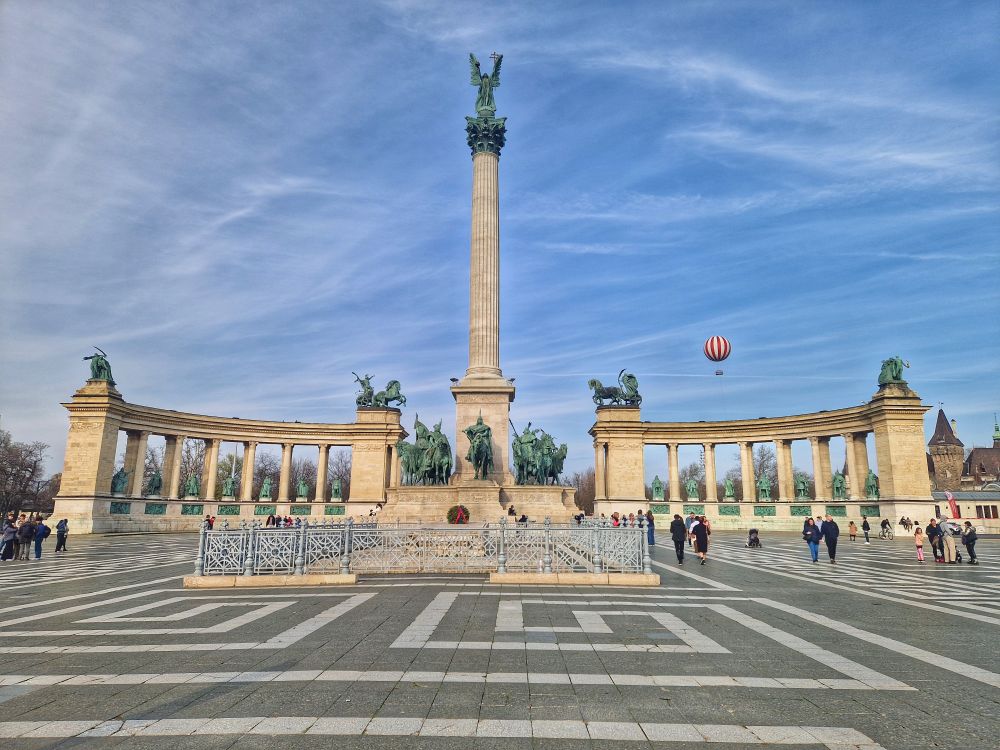
City Park (Városliget), Széchenyi Bath, brand new museums
The square is the entrance to the City Park, where you can visit the zoo and the Széchenyi Baths.
No other capital in the world has as many spas as Budapest. The baths, built on thermal springs, were used by the Romans and later by the Turks, and today going to the baths is clearly part of the Budapest lifestyle. Széchenyi Bath in City Park is the largest and most popular in town. The stunning yellow buildings were built in 1913, and it’s a popular spot for locals and tourists alike. In addition to the marvellous medicinal natural hot spring waters in the 18 pools, there are 10 saunas/steam cabins, several massage therapies, facial treatments, and more. If you’re only going to one thermal spa, I recommend this one! If you want to combine a great spa experience with the tasting of our national drink, the palinka, you can book a Spa and Palinka tour HERE.
When you walk from Heroes’s square to the Széchenyi Bath, you notice a lake and a castle. The Artificial Ice Rink is one of Budapest’s special meeting places, where in winter you can skate on skates, hot tea in hand, and in summer you can swing in a boat in the beautiful surroundings of Vajdahunyad Castle. The castle is actually a copy of the Hunyad Castle, or Corvin Castle, in Hunedoara, Romania and was built as part of the Millennial Exhibition in 1896.
At the edge of the City Park, on the Ötvenhatosok tere, the new building of the Ethnographic Museum evokes two interlocking hillsides. Its special feature is the façade decoration, made of nearly half a million pixels, and the roof garden, which covers more than 7,000 square metres. Another new institution is the House of Hungarian Music, which is a concert venue, museum and educational centre, but the building that houses it is unique in itself. Close to the two brand new buildings, an old jewel box, the Millennium House, has also been renovated to house a cosy café and contemporary exhibitions.
Budapest weekend itinerary – extra programs
If you’ve finished your sightseeing early one day or have an extra day, I can recommend a few more hours of program around the city. Take tram 47 or 49 to Fővám tér (3 stops) to start the walk.
Central Market Hall
The grandiose building, designed by Samu Pecz, was not accidentally located at the Pest end of the present-day Liberty Bridge: this was the site of the main customs house, where goods transported on the Danube were cleared through customs. The hall, which at that time was still overlooked by a canal running through its centre, opened its doors to customers in 1897. Its popularity with both residents and tourists has been undiminished ever since.
For tourists arriving in Budapest, the Great Market Hall is an unmissable stop. It has attracted illustrious visitors over the decades, including Margaret Thatcher, Princess Diana and the Japanese monarch. In 2013, CNN Travel voted it the best and most beautiful market in Europe, passing famous markets like the Mercat de San Josep de la Boqueira.
The roof of the 10,000 square metre building is covered with tiles from the famous Zsolnay factory (same tiles, as on the roof of Matthias Church), while the ironwork inside is a sight to behold. The ground floor is made up of groceries and is a great place to pick up some Hungarian paprika. The second floor (or first floor for Europeans) is home to souvenirs and the prepared foods section.
Cave church
Take a quick walk across the Liberty Bridge and enjoy the pretty views. Almost directly across the street from the Buda side of Liberty Bridge sits Cave Church.
The Church of Our Lady of the Hungarians is the most unique church in Budapest, and belongs to the only monastic order founded by Hungarians, the Order of Saint Paul of the First Hermit. The order was dissolved by Joseph II in 1786, along with other orders, and the monks were only allowed to return home in 1934, when the Cave Church was built for them on the Danube side of Gellért Hill in a natural cave. The idea was conceived by Hungarian pilgrims visiting the virgin shrine of Lourdes in 1924, when they wanted to build a replica of the shrine there. Under communism, the monks were taken away, the church was closed, and the monastery later became the dormitory of the State Ballet Institute, only to reopen in 1989. Among the steep rock walls, it not only holds masses but also serves as a visitor centre, guarding one of the most precious relics of the order, the shinbone of St Paul the Hermit.
Gellert Baths
The Gellért is the most famous monumental bath, which opened its doors at the beginning of the 20th century in Buda, surrounded by the Gellért Hill and the Liberty Bridge. The magnificent Art Nouveau spa is part of the Gellért Hotel, an icon of the capital’s hotels for nearly a century. The hotel is currently under renovation, but the spa remains open.

Citadel
Gellért Hill is a lovely spot to move away from the hustle and bustle of the city. If you can’t face the walk, you can catch the 27 bus to the top from Moricz Zsigmond körtér.
The Citadel is as emblematic a place in Budapest as the Statue of Liberty is in New York. Although the Habsburgs built it as an intimidating fortress to watch the rebellious Hungarians from on high after the suppression of the 1848-49 War of Independence, today we think of it as a symbol of freedom. At the top of the Citadel we find our very own Statue of Liberty, the proud woman who has guarded the city, holding a palm leaf, since April 4, 1947.
The Citadel is also a five-star lookout point for the UNESCO World Heritage-listed view of the Buda Castle, the Parlement, the Danube bridges, the whole Pest side and the Buda Hills. Be sure to stick around long enough to watch the lights come on over the city!
Please note that the Citadel is currently under renovation, so you may not be able to get close – but you can surely enjoy the view!
Wine tasting
You might think that you can only do a wine tasting in a cellar somewhere in the countryside, but it’s good to know that there are several wine tasting rooms in our capital as well. In fact, there are wine tastings in the centre of Budapest, so if you don’t want to or can’t travel further afield, or just want to visit a wine cellar in Budapest, you can do so now.
The best-known Hungarian wine region is Tokaj. Among the wines here the naturally sweet wines such as Tokaji Aszú are the most well-known, but they offer wonderful dry wines as well. Also popular in Hungary and abroad is the Egri Bikavér, which is a dry blended red wine.
Book your wine tasting here in Budapest:
Book your wine tasting here in the nearby wine-regions:
River-cruises
The Danube has all kinds of evening entertainment from restaurants on the banks of the river, party cruises and sit-down dinner cruises. I really recommend taking a river cruise as they offer a unique view of Budapest: even if you’ve seen the main landmarks already, they look even more stunning at night, especially the majestic Hungarian Parliament building.
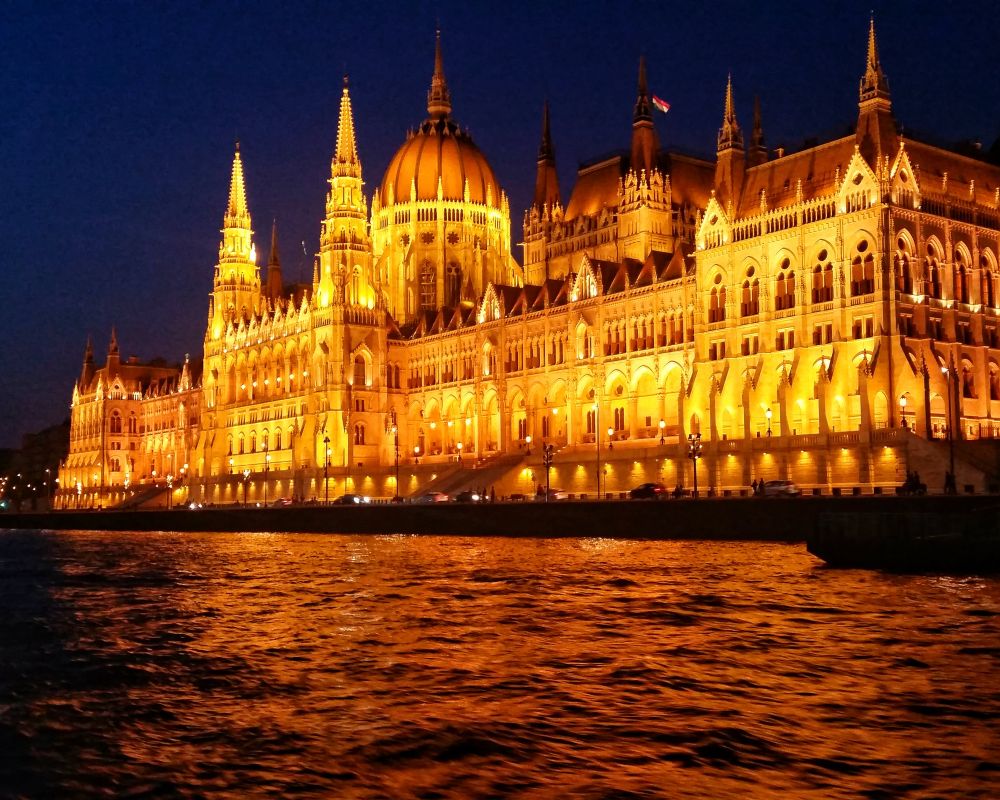
Book your Danube river cruise here with gratis drinks:
The most popular evening cruises with dinner:
I also have an article about my favorite restaurants, cafes and bakeries in Budapest:
Best Budapest restaurants for all budgets and tastes – local guide
Trying to decide, which bath you want to visit? Here is a list:
Spas in Budapest – history, address, hours and tickets

